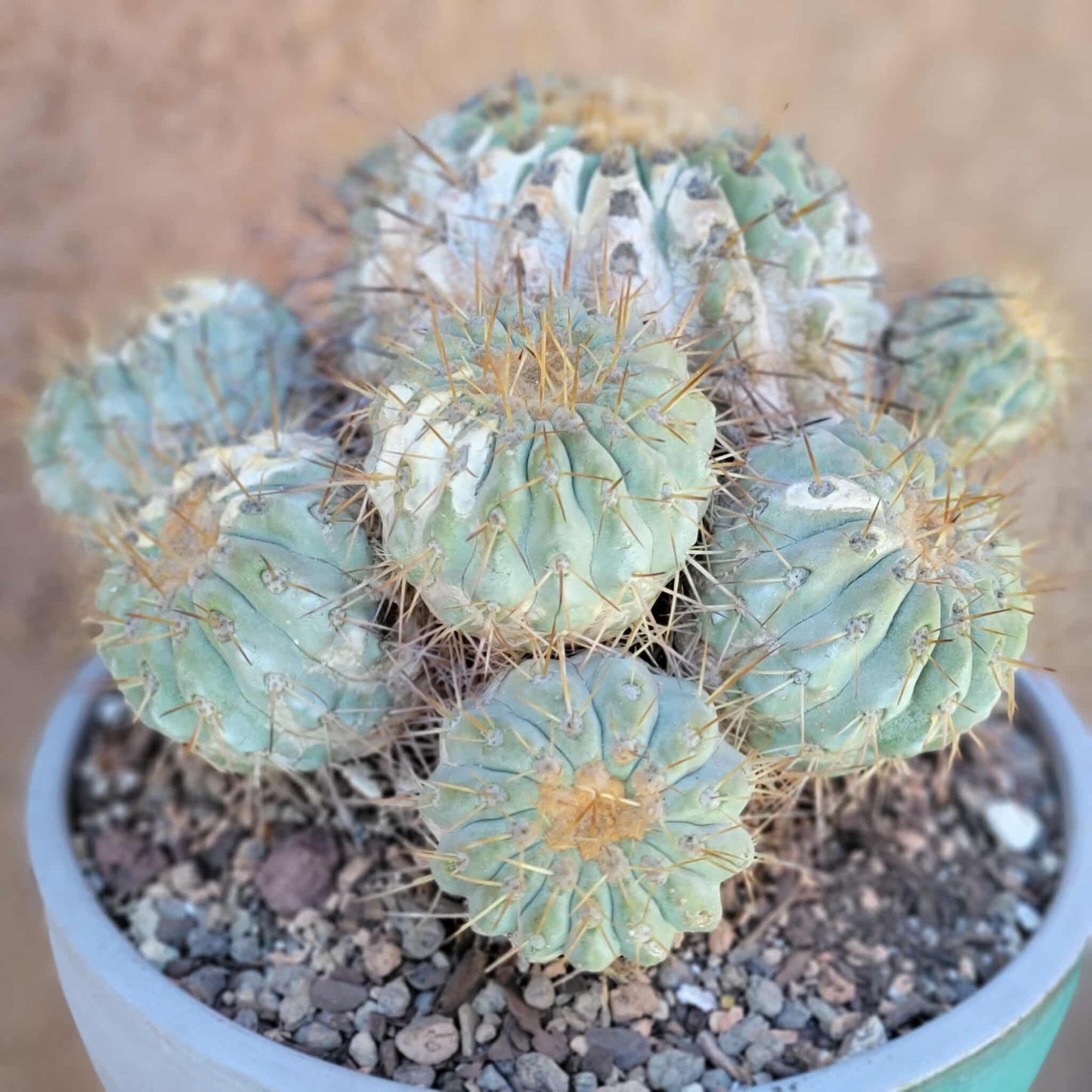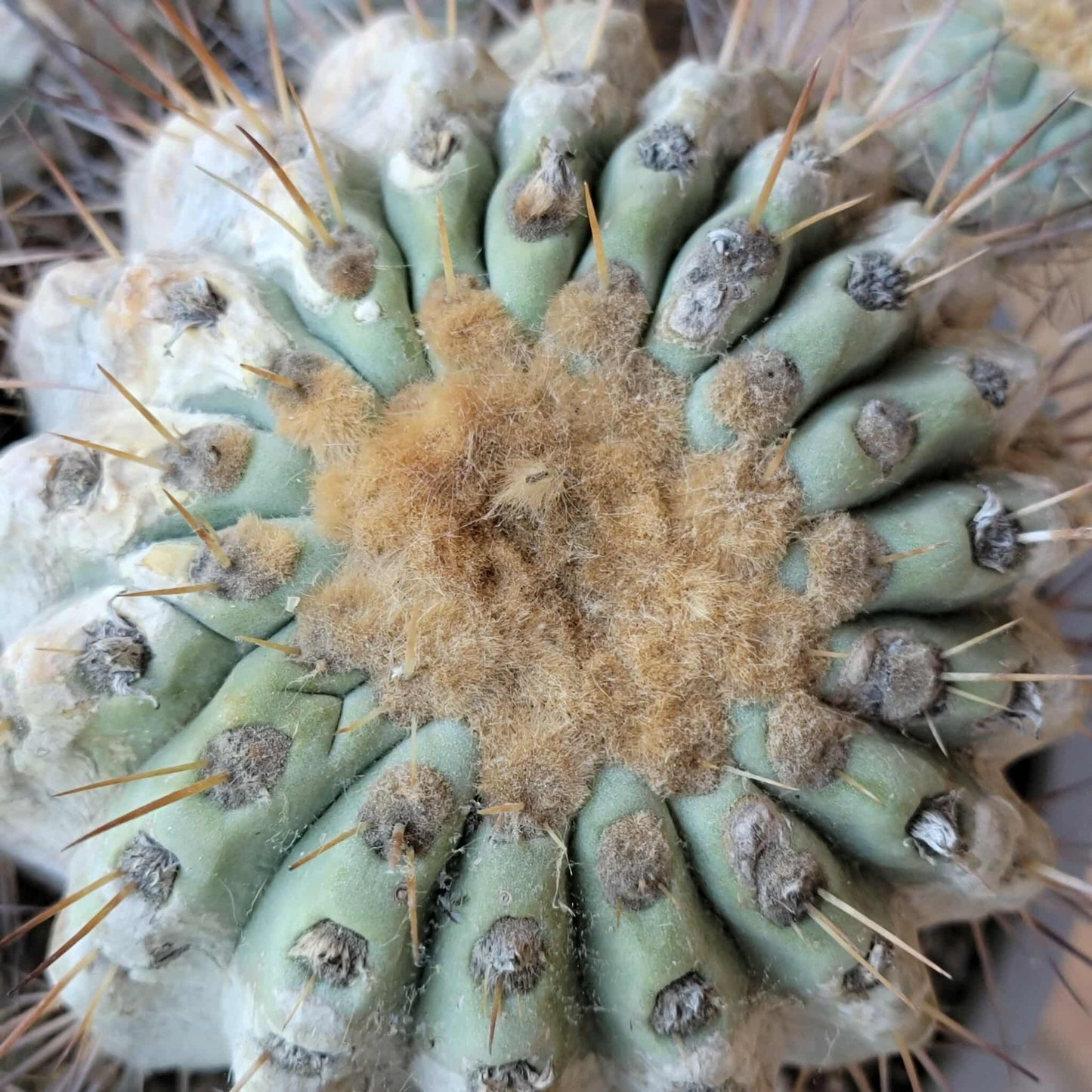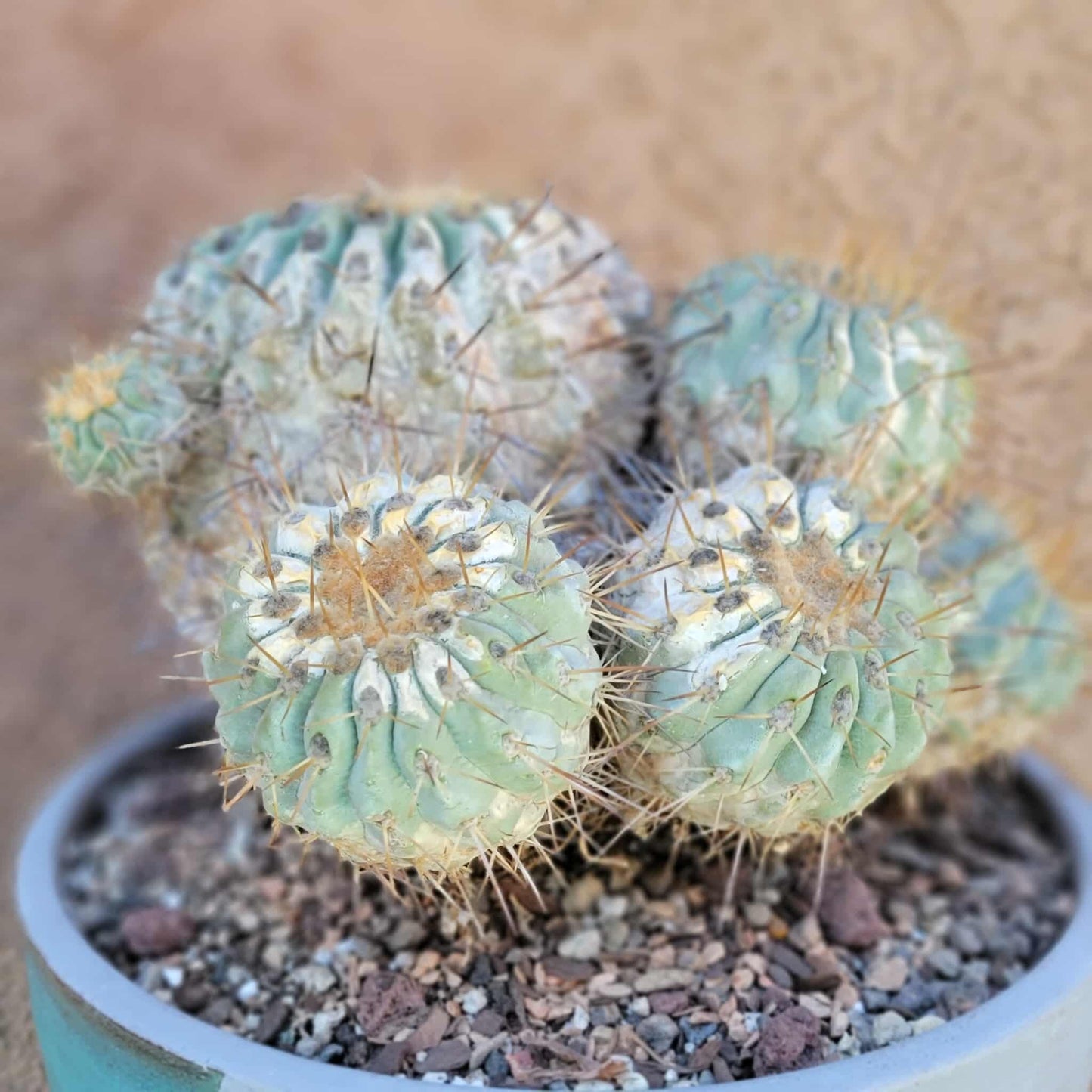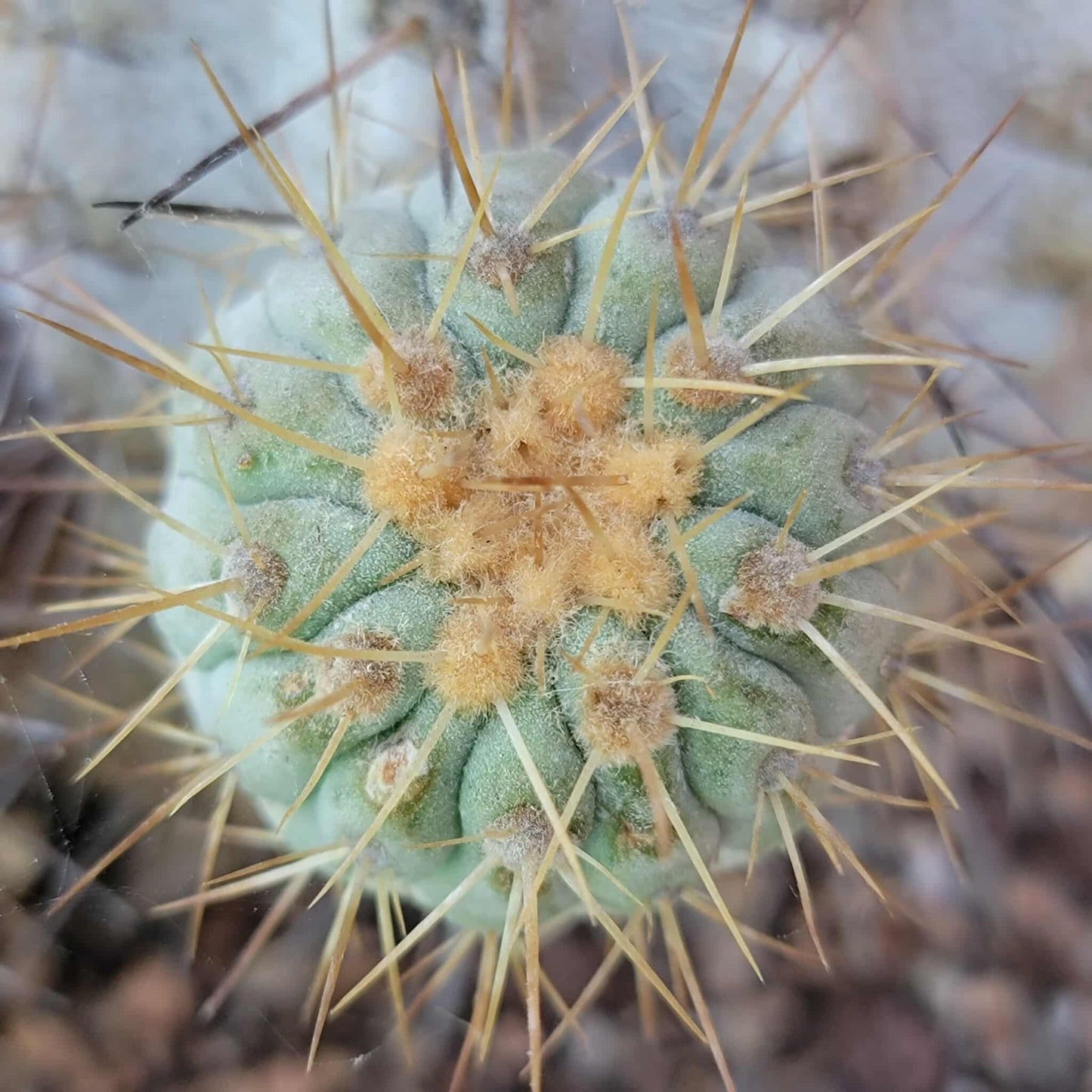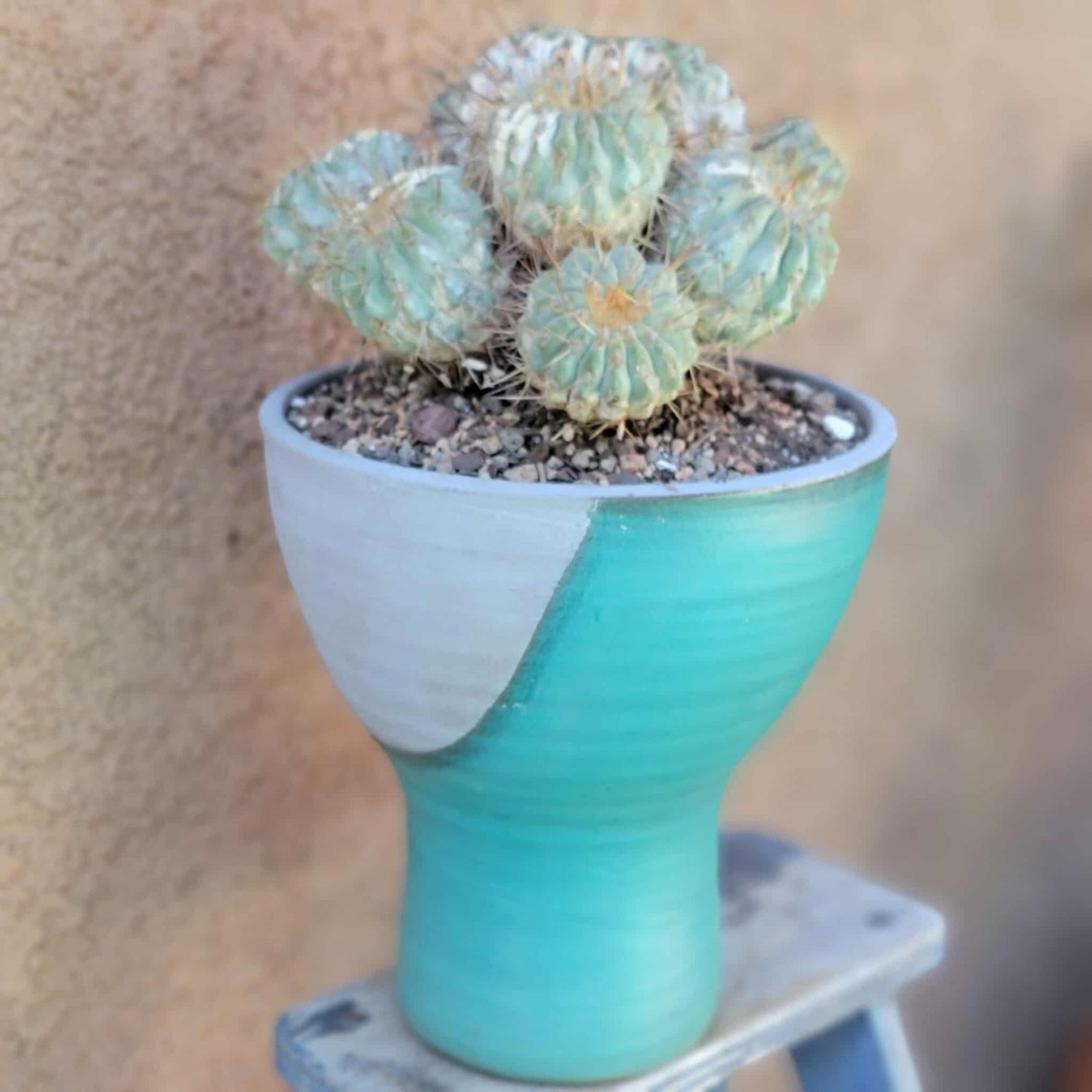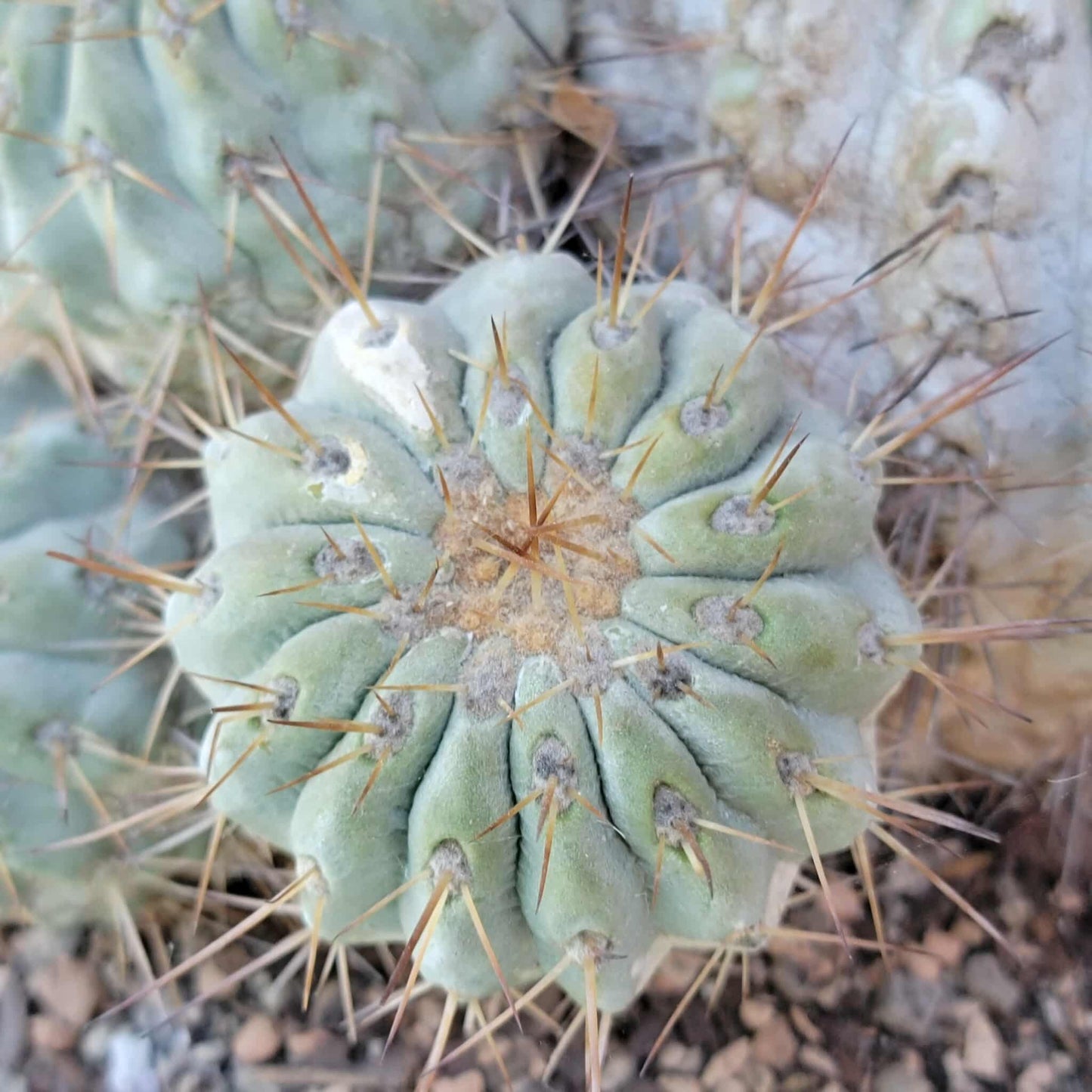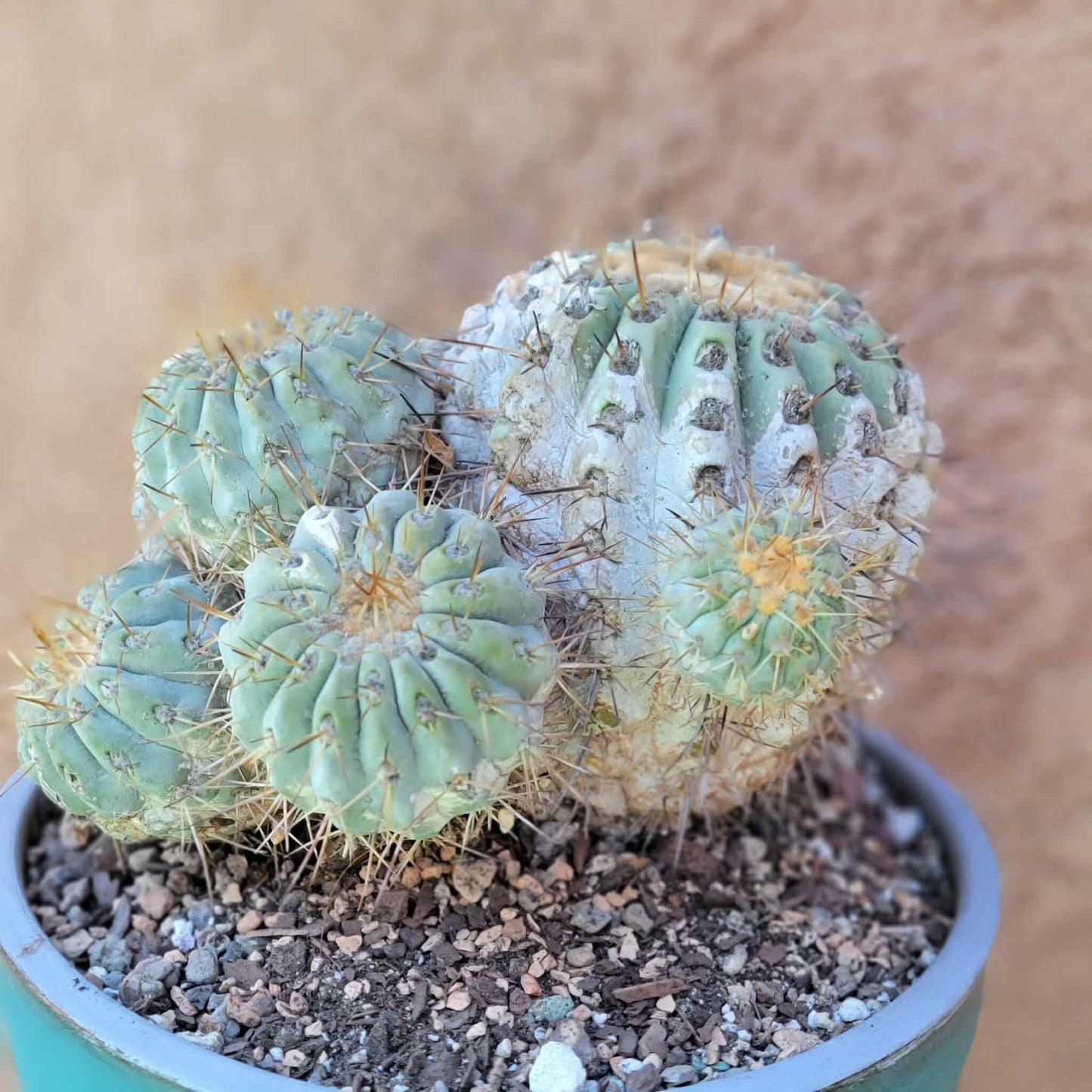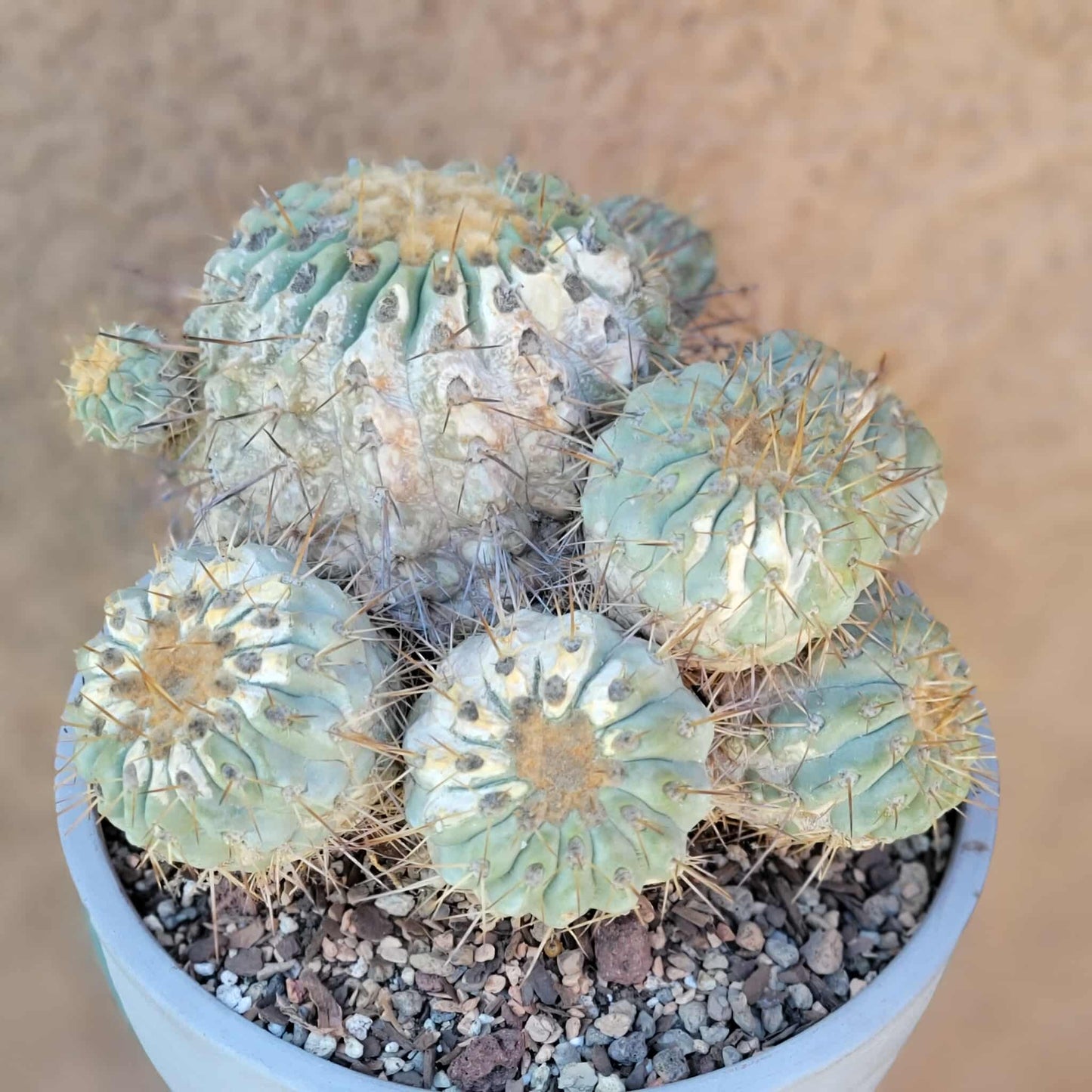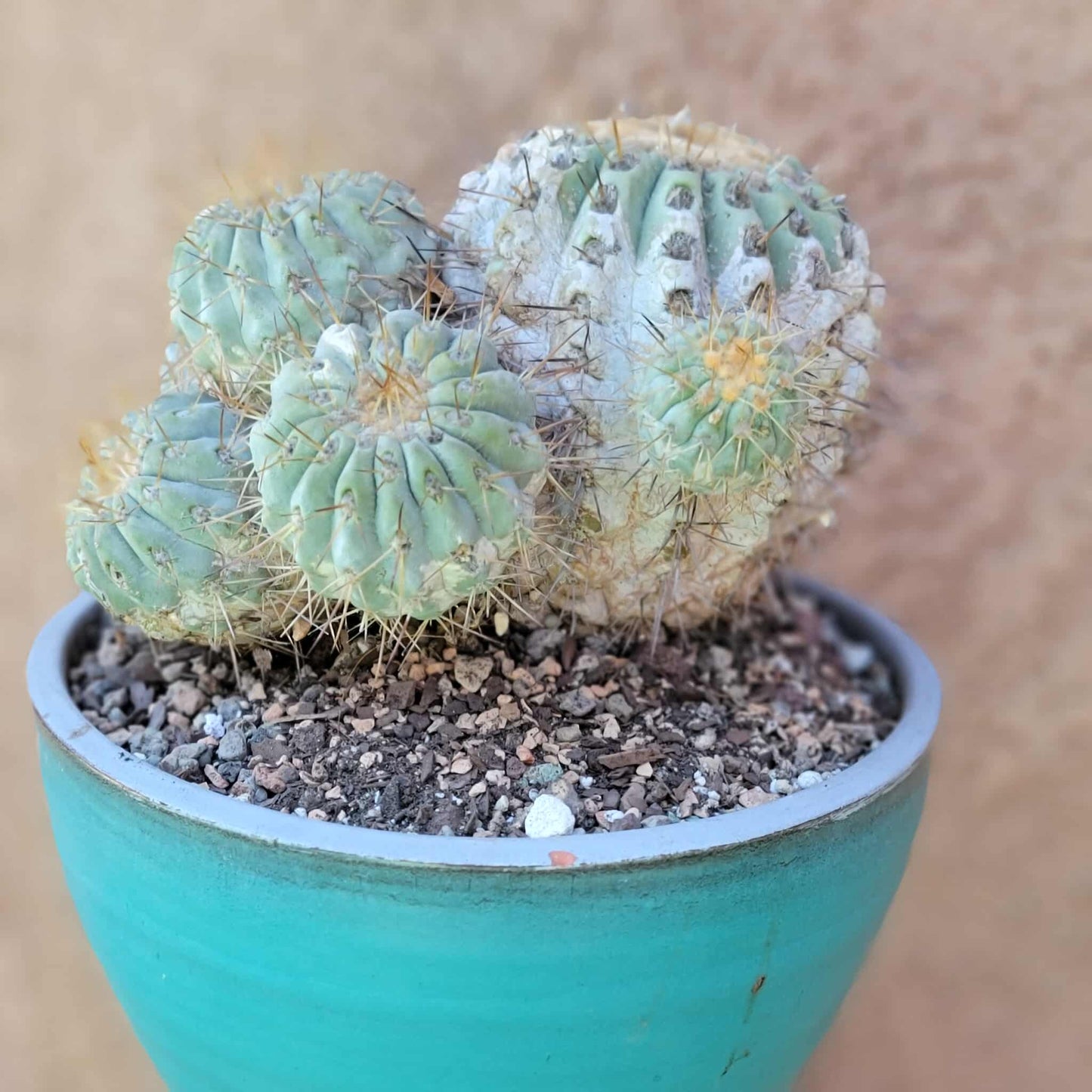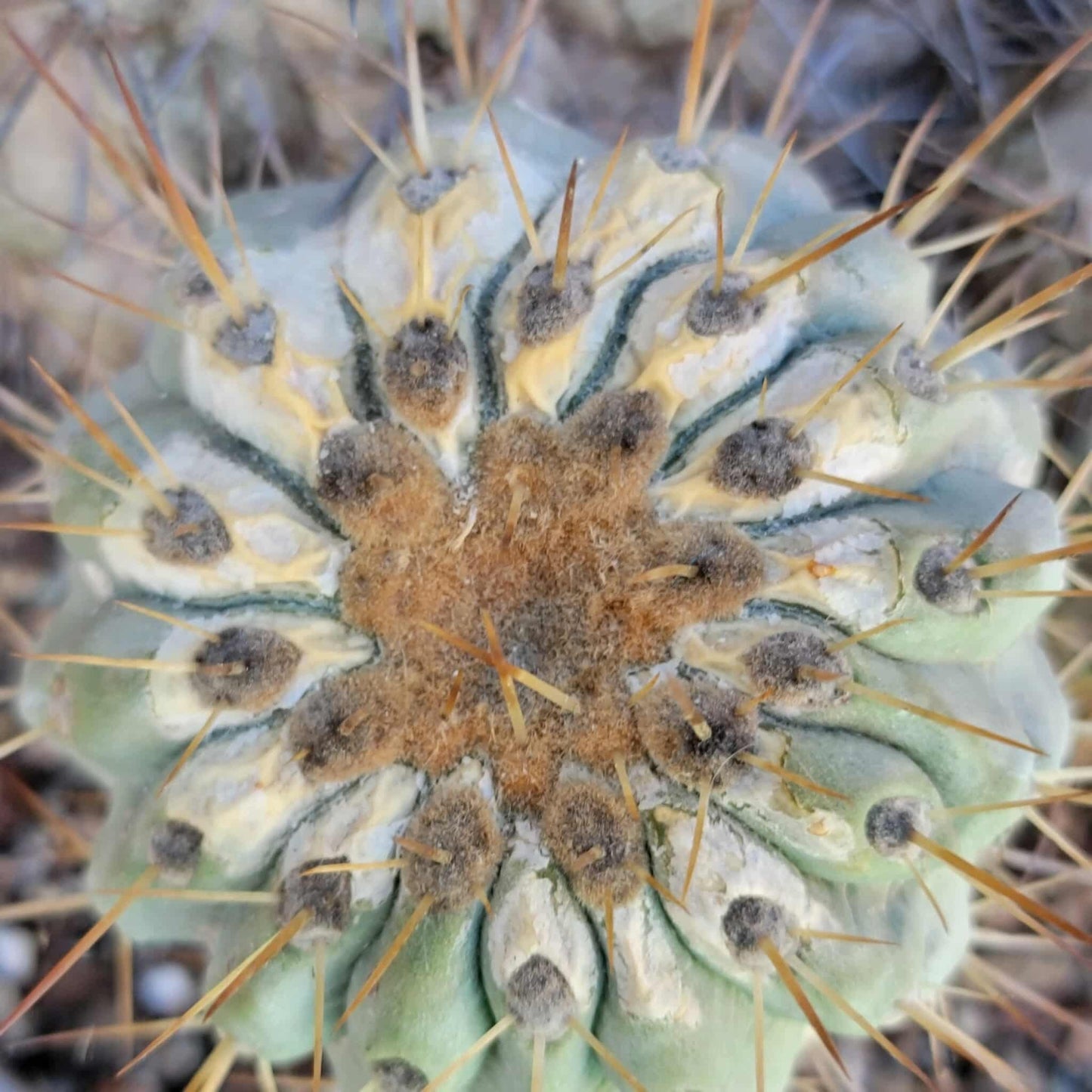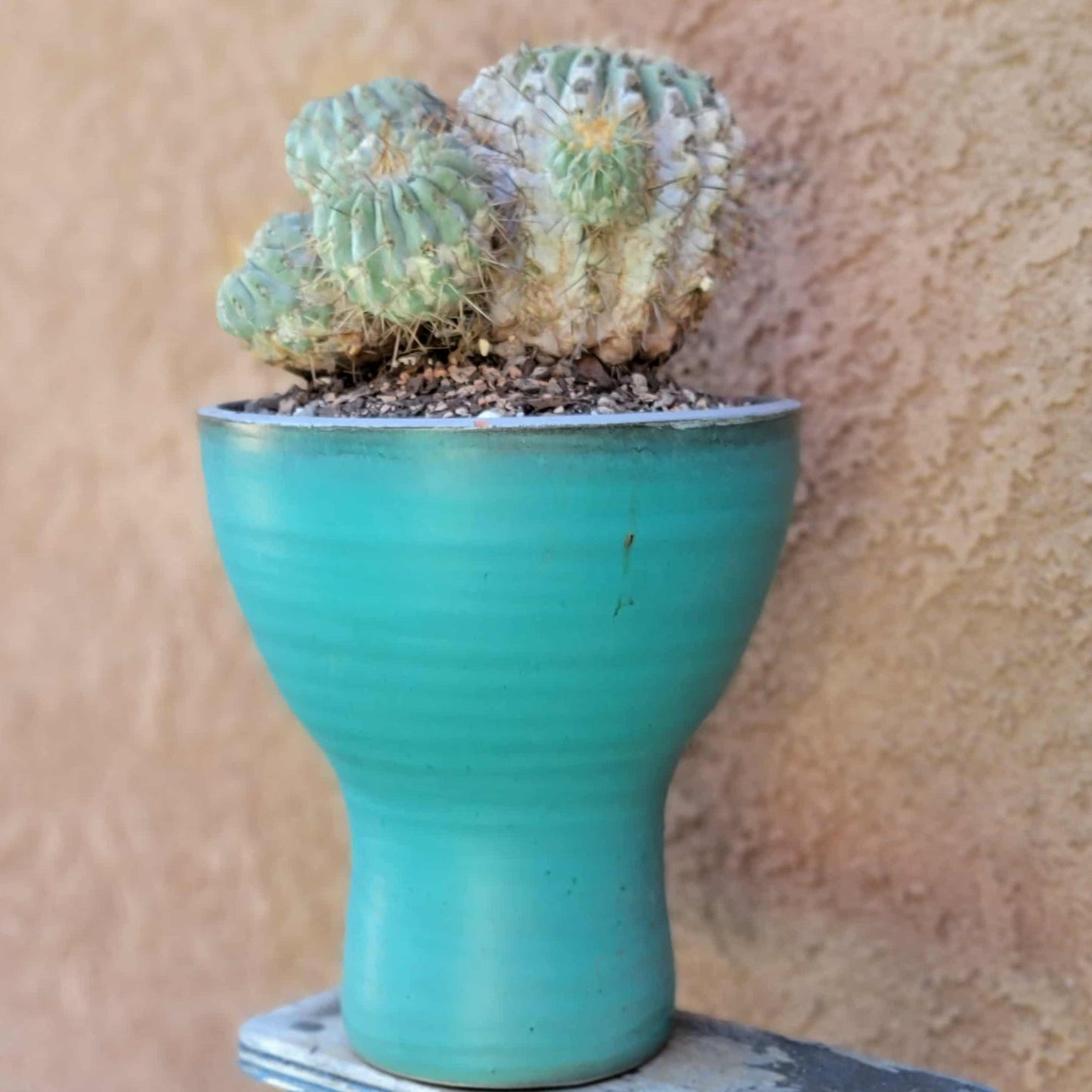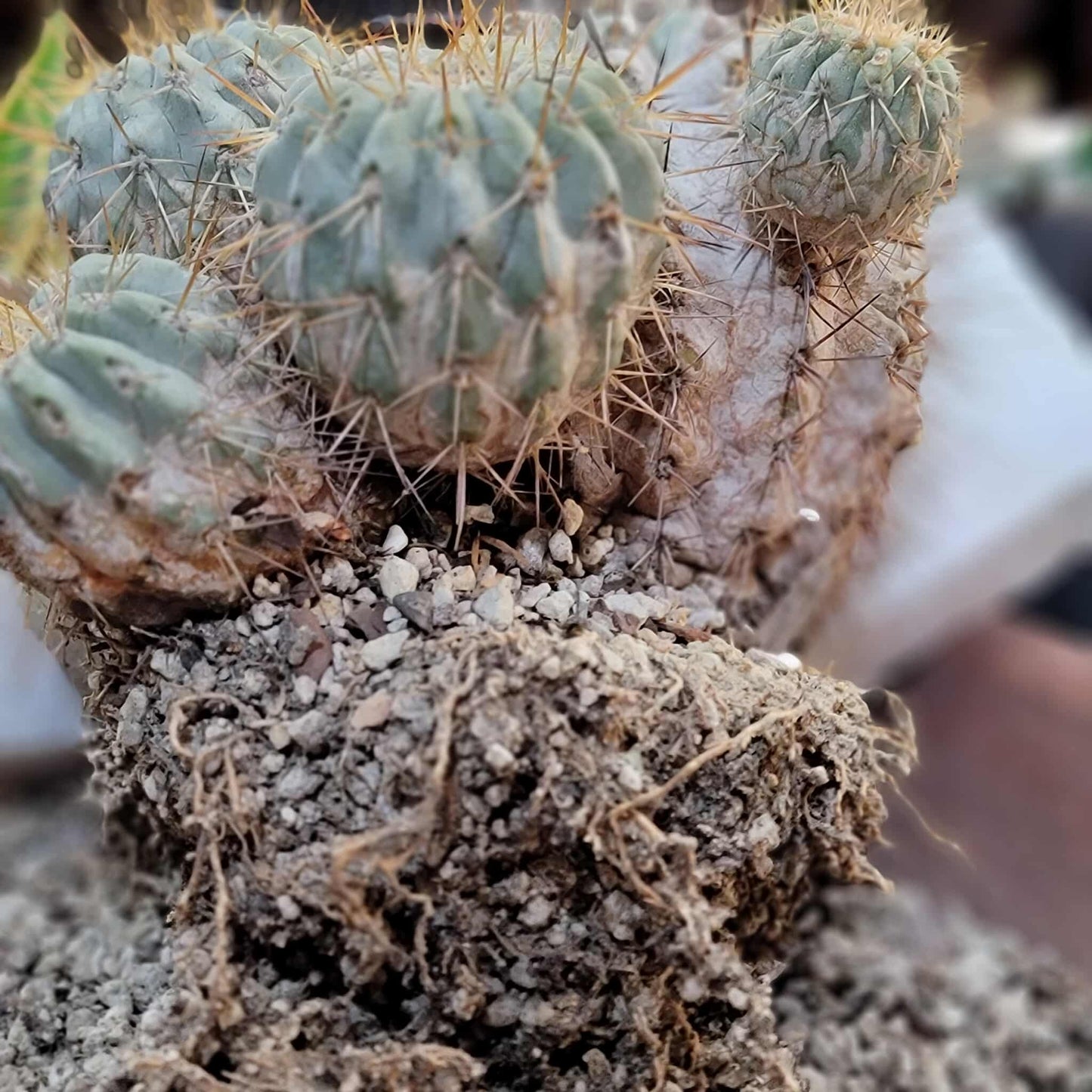Shangri-Ha Cactus Ranch
Copiapoa cinerea subs. haseltoniana
Copiapoa cinerea subs. haseltoniana
Couldn't load pickup availability
Copiapoa cinerea subs. haseltoniana
Rarely does a specimen such as this hit the market and this one is stunning.
Boasts 8 heads!
Measures 9" wide x 6" tall.
Showcased here in Turquoise Tribal Planter (sold separately).
Roots as shown.
Will be shipped bare root.
Due to the fact that this is very rare and valuable specimen, it cannot be shipped. If you are in the LA area, please email us upon checkout to arrange a time to pick up. Any order placed that cannot be picked up in person will necessarily be canceled
Copiapoa cinerea subs. haseltoniana is a slow-growing, clustering cactus native to the Atacama Desert that forms large clumps of light-green to reddish-tinged, woolly stems with golden spines. It requires abundant, direct sunlight, well-draining mineral soil, and very infrequent watering, especially in winter. This species is not frost-hardy and needs to be kept dry and cool during winter dormancy to prevent rot.
KEY FEATURES
· Form: Forms massive clumps, growing slowly over many years.
· Stems: Light green or reddish, round, with a diameter up to 25 cm, covered in amber-yellow wool at the apex, and possessing 14 to 22 ribs.
· Spines: Golden, up to 3 cm long, with 0 to 2 central spines and 0 to 8 radial spines.
· Flowers: Cream and yellow flowers emerge in summer and fall.
CARE REQUIREMENTS
· Light:
· Needs full sun or light shade, but can benefit from some protection from intense summer heat. Strong light encourages flowering and heavy spine production, and can cause the plant to bronze.
· Soil:
· Use a very coarse, mineral-based cactus mix. A well-draining soil with grit around the root neck is crucial to prevent rot.
· Watering:
· Water lightly and sparingly in summer, allowing the soil to dry completely between waterings. It must be kept strictly dry throughout the winter quiescent period, as it is very sensitive to excessive moisture.
· Temperature:
· Not frost-hardy and needs to be kept in a cool place during its winter rest period.
· Fertilizing:
· Feed with a high-potassium fertilizer during the summer growing season.
· Propagation
· Methods: Can be propagated from seeds, offsets (clumps), or by grafting to speed up growth.
· Conditions: Seeds germinate best at temperatures between 21-27° C in the spring.
PESTS & DISEASES
· Pests: Watch for red spiders and scales.
· Diseases: Rot is a significant risk if overwatered; prevention by correct watering and excellent drainage is key.
